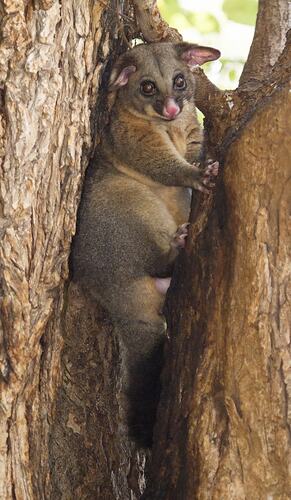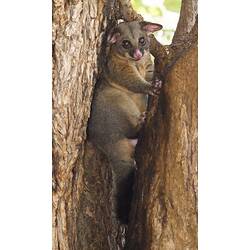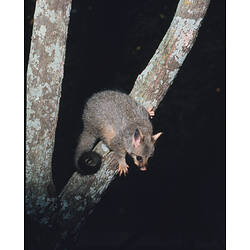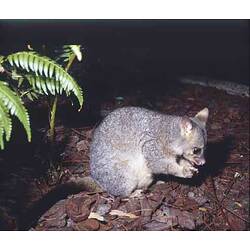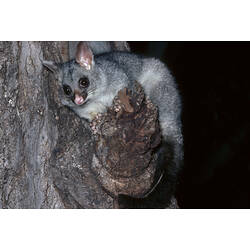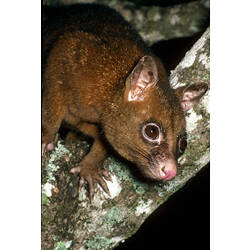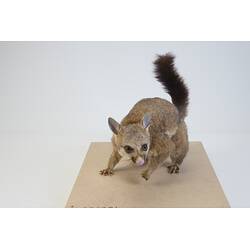General Description
Body fur colour variable. In southern and eastern Australia, the body fur is usually silver-grey above and white-cream underneath. In Tasmania, the body fur is much more woolly and almost black. In the northern tropics of Western Australia and Northern Territory, the body fur is rufous, buff with cream underparts. In the upland rainforest of northeast Queensland, the body fur is copper-coloured. Tail prehensile, thick and black. Black marking around the eyes and nose. Body up to 55 cm; tail up to 40 cm. Call a deep guttural cough.
Biology
Common Brushtail Possums feed on a variety of plants, leaves, fruits and flowers, sometimes also taking nestling birds. They are mostly active at night. They sleep in tree hollows or similar protected nooks, including the ceilings of buildings. In New Zealand they are an introduced pest species. A subspecies in Central Australia (Trichosurus vulpecula vulpecula) is listed as Endangered in the Northern Territory.
Distribution
Mainland Australia and Tasmania. Introduced to New Zealand.
Habitat
Open dry eucalypt forest, woodlands, suburban areas.
More Information
-
Animal Type
-
Animal SubType
-
Fast Fact
The scientific name of the Common Brush-tail Possum, Trichosurus vulpecula, means "furry tailed little fox".
-
Brief Id
A possum with fluffy black tail, long ears, silvery-grey fur above, white underparts, and dark markings around nose and eyes.
-
Colours
Grey, Black, White
-
Maximum Size
55 cm
-
Habitats
-
Where To Look
-
When Active
Nocturnal
-
Diet
Herbivore
-
Diet Categories
Plants, Fruit
-
Endemicity
-
Commercial
No
-
Conservation Statuses
CITES: Not listed, FFG Threatened List: Not listed, EPBC Act 1999: Not listed, IUCN Red List: Least concern
-
Taxon Name
-
Scientific Author
(Kerr, 1792)
-
Common Name
Common Brush-tailed Possum
-
Kingdom
-
Phylum
-
Subphylum
-
Class
-
Superorder
-
Order
-
Suborder
-
Superfamily
-
Family
-
Subfamily
-
Genus
-
Species Name
vulpecula
